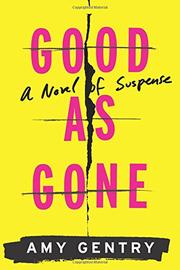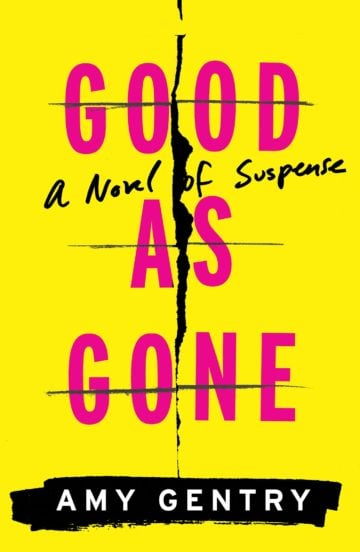
Good as Gone Treats Women Mysteriously Like People
Austin writer Amy Gentry's novel blends feminism and mystery, drawing on Gentry's experience working in a women's shelter.

By Amy Gentry
HOUGHTON MIFFLIN HARCOURT
288 PAGES; $23 Houghton Mifflin Harcourt
Eight years after being taken from her childhood bedroom in the dead of night, Julie Whitaker suddenly returns to her home in Houston. Her family has been longing for this moment, but for Julie’s mother, Anna, the homecoming also raises more questions than answers, more doubt than comfort.
Anna’s subsequent search for the truth about what really happened to her daughter, which is filled with red herrings, heartbreak, suspense and unexpected conclusions, drives the narrative of Austin writer Amy Gentry’s debut mystery novel. Like any good book in this genre, Good as Gone keeps readers guessing until its very last chapters. However, her rendering of complex female characters — and her ability to make the reader empathize with both — is what makes it a memorable read.
The story is told through two points of view that alternate with each chapter. Anna’s voice kicks off the novel, as she recounts the disappearance, as described by her younger daughter, Jane, the only witness to Julie’s kidnapping. Anna is an English professor whose everyday life has been forever tainted because, as she says, “the worst thing has already happened.”
After eight years of living with Julie’s absence and using alcohol to numb the pain, Anna has come to believe her daughter is dead. Instead of hoping for her return, she simply craves closure. After Julie returns, she becomes the narrator, slowly revealing that she may not be who she says she is.
“I didn’t start writing it really until I tried to figure out the structure of it,” Gentry tells me in a phone interview. In terms of the empathy that the book builds through the double narrative, Gentry says: “That was something I felt strongly for my characters and it was sort of the impetus for writing the book.”
This structural framing may seem fairly commonplace in a suspense novel, but Gentry’s choice to parallel the two perspectives — mother’s and daughter’s — lends an air of originality to the story. She compels her readers to engage with two completely different realities, both driven by the same devastating event. In so doing, she asks readers to sympathize with characters driving diametrically opposed narratives, and she builds suspense. Anna’s chapters, which take place in the present, are filled with raw emotion as she seeks truth and closure while Julie’s chapters reveal her mysterious past in vivid, sometimes painful detail.
The novel’s treatment of women stuck with me, because they’re never pigeonholed and they experience real, human emotions. They’re given something that is still somewhat rare in media today — permission to be complicated people, too messy to fall into rigid categories.
At first glance, readers may believe that Julie is set to be the next Amy Dunne, the diabolical star of Gone Girl. But while Gillian Flynn uses Amy to upend the victim narrative, making Amy predator not prey, Julie subverts the idea that people cannot be both good and dishonest. While the twist in Gone Girl comes from Amy’s use of feminine stereotypes to trick the characters as well as the readers, the twist in Good as Gone comes from learning about Julie’s experiences with trauma and what she had to do to survive.
Gentry, a regular book reviewer for the Chicago Tribune and (full disclosure) a writer and book reviewer for the Observer, understands that a mystery novel is only as good as its characters, and so her focus on Anna and Julie is at the center of Good as Gone. The novel is also a testament to the oft-repeated adage, “Write what you know.” Gentry’s work for SafePlace Austin, a women’s shelter, shows in her writing. Although Julie is damaged, she’s not robbed of her agency or rendered a one-dimensional cliche.
The author’s hometown of Houston is the central setting for the novel, and the city becomes a character in her novel. “The characteristics of Houston seemed so perfect for the story I wanted to tell,” Gentry says. “Because of the minimal zoning laws, [the city] is always in a perpetual identity crisis.” In a town where head shops and suburbs can be neighbors, “you never know what’s hiding just around the corner from you.”
Although Gentry’s back and forth between two narratives is a powerful storytelling element, it can be disorienting at first, even a bit clunky and disruptive. And Gentry could have done more to develop the diversity of her characters. Three are people of color, but Gentry doesn’t explore their identities much. As a Latina reader, I was excited about the emergence of a detective named Alex Mercado, then disappointed by the hollowness of his character. To be fair, I know there’s only so much story and character development you can fit into a novel, but I would have liked to spend more time with him. These details aside, Good as Gone is certainly a novel worth diving into this summer.


